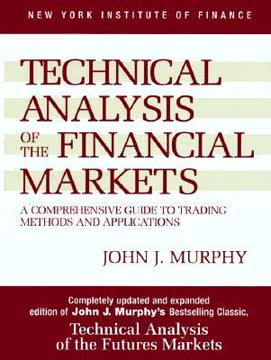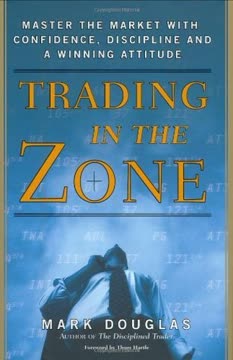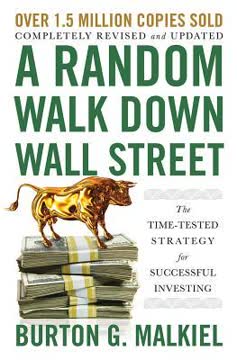重点摘要
1. 投机是一门生意:以纪律和耐心对待它
“投机过于刺激。大多数投机者频繁光顾券商办公室或接听电话,营业结束后又与朋友谈论市场。”
将投机视为严肃的生意。 如同任何成功的企业,它需要纪律、耐心和系统化的方法。许多人抱着赌博心态进入市场,急于行动和快速获利,结果导致过度交易、情绪化决策,最终亏损。
成功的投机者懂得耐心。 他们明白每年只有少数几个重要机会。通过等待关键时刻,避免频繁交易,你能提高成功率,减少不必要的风险和成本。
- 成功投机者的关键特质:
- 对市场分析保持纪律性
- 耐心等待高概率的交易机会
- 情绪控制,避免冲动交易
- 系统化记录和市场研究
- 将盈亏视为业务结果,而非个人胜败
2. 时机至关重要:等待关键点再行动
“每当我有耐心等待市场达到我称之为‘关键点’时再开始交易,我的操作总是盈利。”
关键点是指示潜在趋势变化或重大波动的价格水平。 这些点通常出现在前期高点或低点、整数关口,或股票经过一段时间盘整后。等待股票触及并在这些水平反应,能获得未来走势的重要信息。
耐心入场至关重要。 许多交易者过早介入,未等市场确认方向,常被震出好仓或遭受不必要亏损。等待关键点和确认,提高成功概率,减轻频繁亏损带来的情绪负担。
- 可能的关键点信号:
- 价格接近前期重要高点或低点
- 股票触及心理整数关口(如50、100、200)
- 盘整后伴随放量突破
- 价格走势与技术指标背离
- 多重支撑或阻力位汇聚
3. 保持个人记录:建立专属市场分析体系
“你会惊讶于自己能形成多少新想法,这些想法无人能给,因为它们是你的发现,是你的秘密,应当保守。”
个人记录极为宝贵。 通过细致追踪价格、成交量及自身交易,你能更深入理解市场行为。此过程帮助你识别模式,更准确预测未来走势。
打造属于自己的系统。 虽然学习他人重要,但真正的精通来自于创造适合自己个性和交易风格的方法。你的记录成为自我反思和持续进步的利器。
- 市场记录应包含的关键内容:
- 价格变动与成交量数据
- 关键点及重要支撑/阻力位识别
- 市场情绪与新闻事件笔记
- 自身交易,包括进出场点及理由
- 盈亏交易的事后分析
- 行业轮动及整体市场趋势观察
4. 跟随领头羊:聚焦主流股票与板块
“如果你无法从领先活跃的股票中获利,就难以从整个股市获利。”
专注市场领头羊。 这些股票通常趋势明朗,信号可靠,流动性高,交易时滑点较小。
板块轮动至关重要。 市场领导权随时间变化。关注表现最强的板块和股票,识别“聪明资金”流向,提升捕捉大行情的机会。
-
市场领头羊特征:
-
稳定盈利增长与坚实基本面
-
相对市场的强势表现
-
机构持股比例上升
-
正面新闻及分析师调升评级
-
放量突破新高
-
重点关注板块(利弗莫尔时代):
- 钢铁
- 汽车
- 飞机制造
- 邮购业务
5. 警惕内幕消息与小道消息:信赖市场行为
“警惕内幕消息……所有内幕消息。”
市场行为是真理的最终体现。 无论消息多么诱人,始终以市场实际表现为准。价格与成交量反映所有已知信息,且常领先未来发展。
小道消息风险大。 即使是好心的内部人士也可能信息不全或有偏见。且当你收到消息时,信息往往已被市场消化。依赖消息易导致时机错误和情绪化决策。
- 对内幕消息和小道消息保持怀疑的理由:
- 信息可能不完整或有偏见
- 时机往往滞后,行情已发生
- 产生对特定结果的情绪依赖
- 干扰对价格和成交量的客观分析
- 导致过度自信和仓位过重
6. 保护资本:系统性获利了结与止损
“永远不要加仓亏损。让这句话深深刻在你的脑海。”
资本保全至关重要。 没有资本,无法把握未来机会。制定严格的获利和止损规则,并严格执行。
避免加仓摊平亏损。 加码亏损仓位往往导致更大损失和情绪失控。应迅速止损,重新评估交易。
- 资本保全的关键原则:
- 设定并遵守止损点
- 交易获利时分批了结
- 单笔交易风险控制在资本小比例内
- 避免过度交易,重质不重量
- 定期提取部分利润,实现收益锁定
7. 结合时间因素与价格变动,精准预测
“直到我开始考虑时间因素,我的记录才真正有助于预测重要走势。”
时间是市场分析的重要维度。 仅凭价格变动无法全面判断。考虑股票盘整或趋势持续时间,有助于更好预测突破或反转。
建立系统化方法。 利弗莫尔通过将价格变动按幅度和方向分类记录,形象展现模式,更准确预判未来走势。
- 利弗莫尔时间-价格分析要点:
- 跟踪自然反弹与回调(约6点幅度)
- 识别趋势可能转折的关键点
- 以两只领先股票的综合走势确定“关键价”
- 区分小幅震荡与重大趋势变化
- 判断股票是否“表现正常”,基于历史行为
8. 从成功与失败中学习:每笔交易都是课程
“承认错误并从中获益。我们都知道自己何时错了,市场会告诉投机者,因为他在亏钱。”
将错误视为学习机会。 每笔交易,无论盈亏,都提供宝贵信息。分析盈利交易找出成功因素,剖析亏损交易发现改进空间。
保持交易日志。 记录交易事实、思考过程及情绪状态,帮助识别决策模式和易犯错误。
- 每笔交易后应自问:
- 是否遵循交易计划?
- 入场/出场信号是什么?
- 情绪如何影响决策?
- 是否忽略了警示信号?
- 如何将教训应用于未来交易?
9. 培养情绪控制:恐惧与贪婪是最大敌人
“贸然分散投资是危险的。”
情绪纪律至关重要。 恐惧和贪婪导致错误决策,如过早止盈、久抱亏损或过度交易。制定策略保持客观,坚守交易计划。
避免总想持仓的冲动。 交易质量远胜数量。过度交易多因急躁或害怕错过,导致入场时机不佳和不必要亏损。
- 维持情绪控制的策略:
- 制定并坚持明确交易计划
- 通过仓位控制限制单笔风险
- 练习心理演练和情景模拟
- 适时远离市场,保持清醒
- 培养交易外兴趣,减少情绪依赖
10. 利弗莫尔市场关键法则:预测重大走势的框架
“当你静观其变时,那些日复一日交易的投机者正为你的下一次行动铺路。你将从他们的错误中获益。”
利弗莫尔市场关键法则是一套系统方法, 结合价格行为、时间因素和关键点概念,预测重大趋势。
聚焦重大走势,非短期波动。 该法则旨在捕捉显著趋势,等待明确信号和确认,提高成功概率,减轻频繁交易带来的情绪负担。
- 利弗莫尔市场关键法则核心组成:
- 六栏记录系统(次级反弹、自然反弹、上升趋势、下降趋势、自然回调、次级回调)
- 采用不同颜色墨水区分趋势(黑色代表上升,红色代表下降)
- 通过价格行为和时间分析识别关键点
- 通过关键价位和后续走势确认趋势变化
- 结合个股分析与大盘及板块趋势
最后更新日期:
FAQ
What's "How to Trade In Stocks" about?
- Overview of Speculation: The book is a guide to understanding and mastering the art of stock market speculation, focusing on Jesse Livermore's personal strategies and experiences.
- Livermore's Formula: It introduces Livermore's unique formula for combining the time element and price to predict stock movements.
- Historical Context: Written in 1940, it reflects on Livermore's career and the speculative practices of the early 20th century.
- Practical Advice: The book offers practical advice for both novice and experienced traders on how to approach the stock market as a business.
Why should I read "How to Trade In Stocks"?
- Learn from a Legend: Jesse Livermore is considered one of the greatest stock market speculators, and his insights are invaluable for anyone interested in trading.
- Timeless Strategies: Despite being written decades ago, the strategies and principles discussed are still relevant and applicable today.
- Comprehensive Guide: It covers a wide range of topics from basic trading principles to advanced techniques, making it suitable for traders at all levels.
- Real-Life Examples: Livermore shares personal anecdotes and examples that illustrate the application of his methods in real market scenarios.
What are the key takeaways of "How to Trade In Stocks"?
- Speculation as a Business: Treat stock market speculation as a business, requiring study, discipline, and a systematic approach.
- Importance of Timing: The time element is crucial in trading, and understanding when to enter and exit the market can significantly impact success.
- Avoiding Common Mistakes: Livermore emphasizes avoiding common pitfalls such as averaging down on losing trades and over-trading.
- Pivotal Points: Identifying and acting on pivotal points in stock prices can lead to successful trades and substantial profits.
What is the Livermore Market Key?
- Price Patterns: The Livermore Market Key is a method for identifying price patterns that indicate major market movements.
- Time Element: It incorporates the time element to distinguish between minor fluctuations and significant trends.
- Pivotal Points: The method focuses on pivotal points, which are critical price levels that signal the beginning or end of a trend.
- Record Keeping: Livermore stresses the importance of keeping detailed records to track these patterns and make informed trading decisions.
How does Jesse Livermore define a "Pivotal Point"?
- Critical Price Levels: Pivotal points are specific price levels where a stock's trend is likely to change direction.
- Signal for Action: They serve as signals for traders to either enter or exit a position, depending on the stock's movement relative to these points.
- Confirmation Required: Livermore advises waiting for confirmation of a trend change before acting on a pivotal point.
- Historical Patterns: These points are identified through historical price patterns and require careful analysis and record-keeping.
What are some of the best quotes from "How to Trade In Stocks" and what do they mean?
- "Markets are never wrong—opinions often are." This emphasizes the importance of relying on market data rather than personal biases or opinions.
- "Profits always take care of themselves, but losses never do." Livermore highlights the need to manage losses actively to protect capital.
- "The real money made in speculating has been in commitments in a stock or commodity showing a profit right from the start." This suggests that successful trades often show immediate gains, reinforcing the importance of timing.
- "Never average losses." A warning against the common mistake of buying more of a losing stock in hopes of reducing the average cost.
What is the "Challenge of Speculation" according to Jesse Livermore?
- Fascination and Risk: Speculation is described as a fascinating yet risky endeavor, not suited for the mentally lazy or emotionally unstable.
- Scientific Approach: Livermore advocates for a scientific approach to speculation, involving research, record-keeping, and analysis.
- Patience and Discipline: Success in speculation requires patience, discipline, and the ability to wait for the right opportunities.
- Avoiding Quick Riches: He warns against the allure of quick profits, emphasizing that consistent success comes from treating speculation as a business.
How does Jesse Livermore suggest handling profits and losses?
- Lock in Profits: After a successful trade, Livermore advises taking out a portion of the profits and setting it aside as a reserve.
- Cut Losses Quickly: He stresses the importance of cutting losses quickly to prevent small losses from becoming large ones.
- Avoid Averaging Down: Livermore warns against the practice of averaging down on losing trades, as it can lead to larger losses.
- Psychological Value: Handling profits and losses with discipline has a psychological benefit, helping traders maintain a balanced approach.
What are the "Explanatory Rules" in Livermore's method?
- Recording Prices: Livermore outlines a method for recording stock prices in specific columns to track trends and pivotal points.
- Color-Coding: Prices are recorded in different colors (black for upward trends, red for downward trends) to visually distinguish trends.
- Natural Movements: The rules help identify natural rallies and reactions, which are normal fluctuations within a trend.
- Pivotal Points: The method emphasizes the importance of pivotal points, which are critical for determining the start or end of a trend.
How does Jesse Livermore view "Inside Information"?
- Skeptical of Tips: Livermore is skeptical of inside information and tips, believing they often lead to losses rather than gains.
- Market Action is Key: He emphasizes that the market's action is the most reliable indicator, rather than relying on external information.
- Self-Reliance: Traders should rely on their own analysis and judgment rather than seeking information from others.
- Avoiding Distractions: Inside information can be a distraction from the real task of analyzing market trends and patterns.
What is the significance of "Follow the Leaders" in Livermore's strategy?
- Focus on Leaders: Livermore advises focusing on leading stocks in prominent groups, as they often dictate market trends.
- Avoid Over-Diversification: He warns against spreading investments too thin across many stocks, which can lead to confusion and missed opportunities.
- Market Trends: By following the leaders, traders can better anticipate market trends and make informed decisions.
- Changing Leaders: Livermore notes that market leaders change over time, and traders should adapt to these changes to stay ahead.
What lessons can be learned from Livermore's "Million Dollar Blunder"?
- Importance of Timing: Livermore's blunder highlights the critical importance of timing in trading decisions.
- Patience is Key: The mistake underscores the need for patience and waiting for the right moment to act.
- Avoiding Impulsiveness: Acting impulsively can lead to significant losses, as demonstrated by Livermore's experience.
- Learning from Mistakes: Livermore emphasizes the importance of learning from mistakes and using them to improve future trading strategies.
评论
《如何交易股票》评价褒贬不一,平均评分为4.21分(满分5分)。读者普遍认可利弗莫尔独特的视角和自律精神,认为他的见解对交易者颇具价值,许多人视其为有志于交易者的必读之作。然而,也有部分读者批评内容重复,举例陈旧,且与现代市场的相关性存疑。批评者还指出利弗莫尔最终遭遇财务亏损和悲剧结局。书籍的编辑和结构安排同样受到质疑,有人认为其更像是在推广软件,而非传达利弗莫尔的原始建议。总体来看,读者认可书中永恒的交易原则,但对具体技巧的适用性持保留态度。
Similar Books














